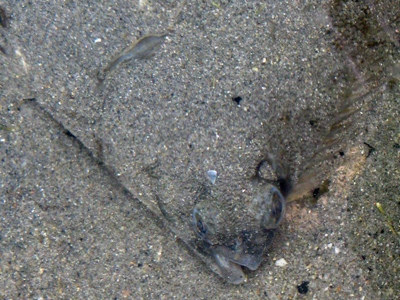
Although winter flounder have declined from historical high numbers, fishing for these unusual flounder remains popular in parts of Delaware, New Jersey, and New York.
Also known as blackback, the winter flounder is almost a total opposite from the larger summer flounder (fluke).
The winter flounder’s eyes are located on the right side of the body as opposed to the left side for summer flounder. The species can also be identified by their straight lateral line, small mouth and dark coloration on the backside.
Winter flounder are one of the few species of flatfish that migrate into coastal estuaries during the winter season. They often congregate together, allowing anglers to catch good numbers of fish.
Winter flounder can be caught with medium action outfits and 10-15 lb. test line. Rigs for catching winter flounder include traditional 2 hook flounder rigs or small spreader bar-type leaders.
For bait, anglers often use mussels, sandworms, bloodworms, or surf clams. Some baits, such as clams, can be prepared in advance by brining with kosher salt and adding a few drops of yellow food coloring.
To attract winter flounder, anglers sometimes anchor and chum. Specialized chum recipes may include ground mackerel, herring, corn, rice, clam bellies, mussels, and cat food.